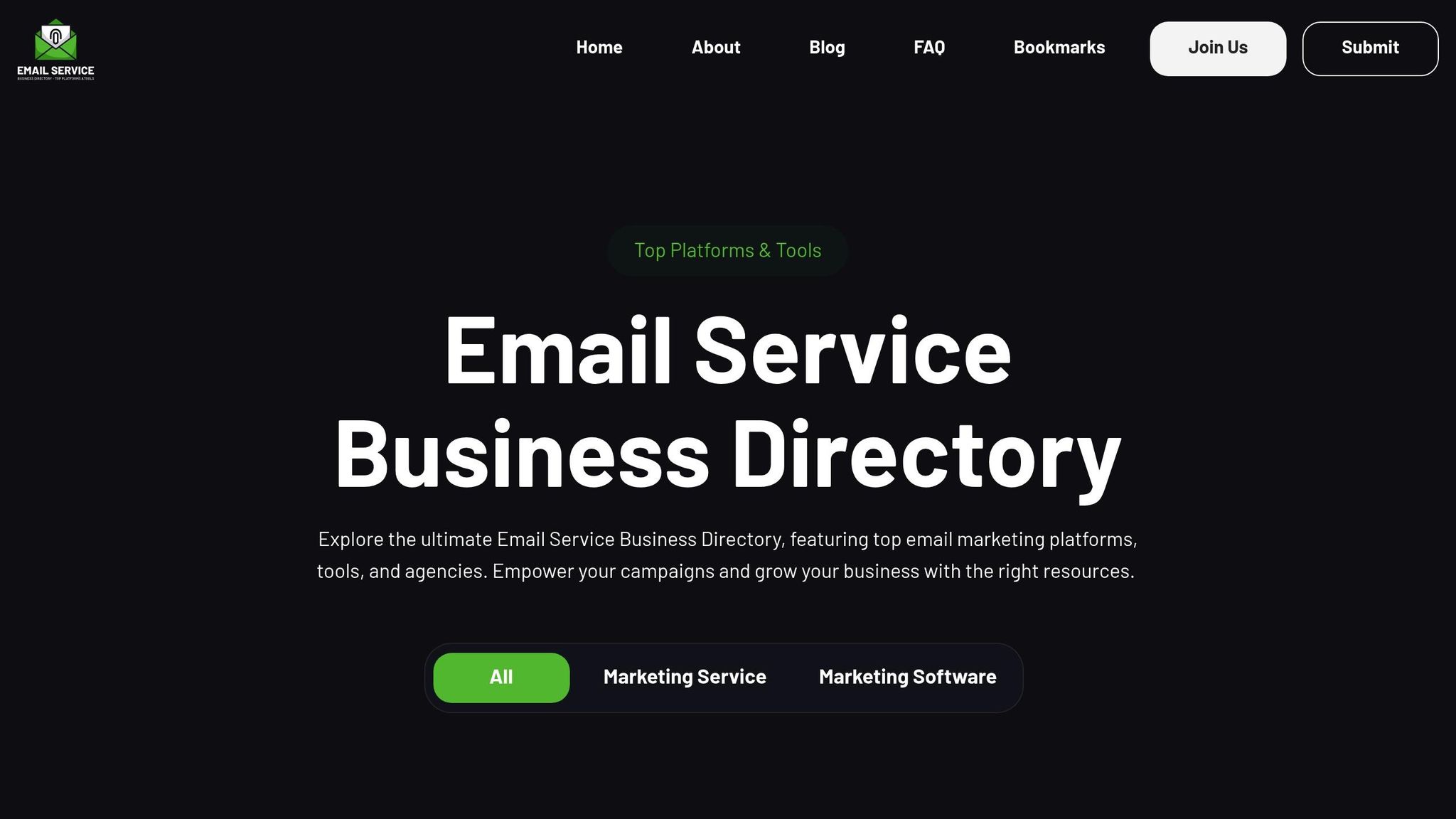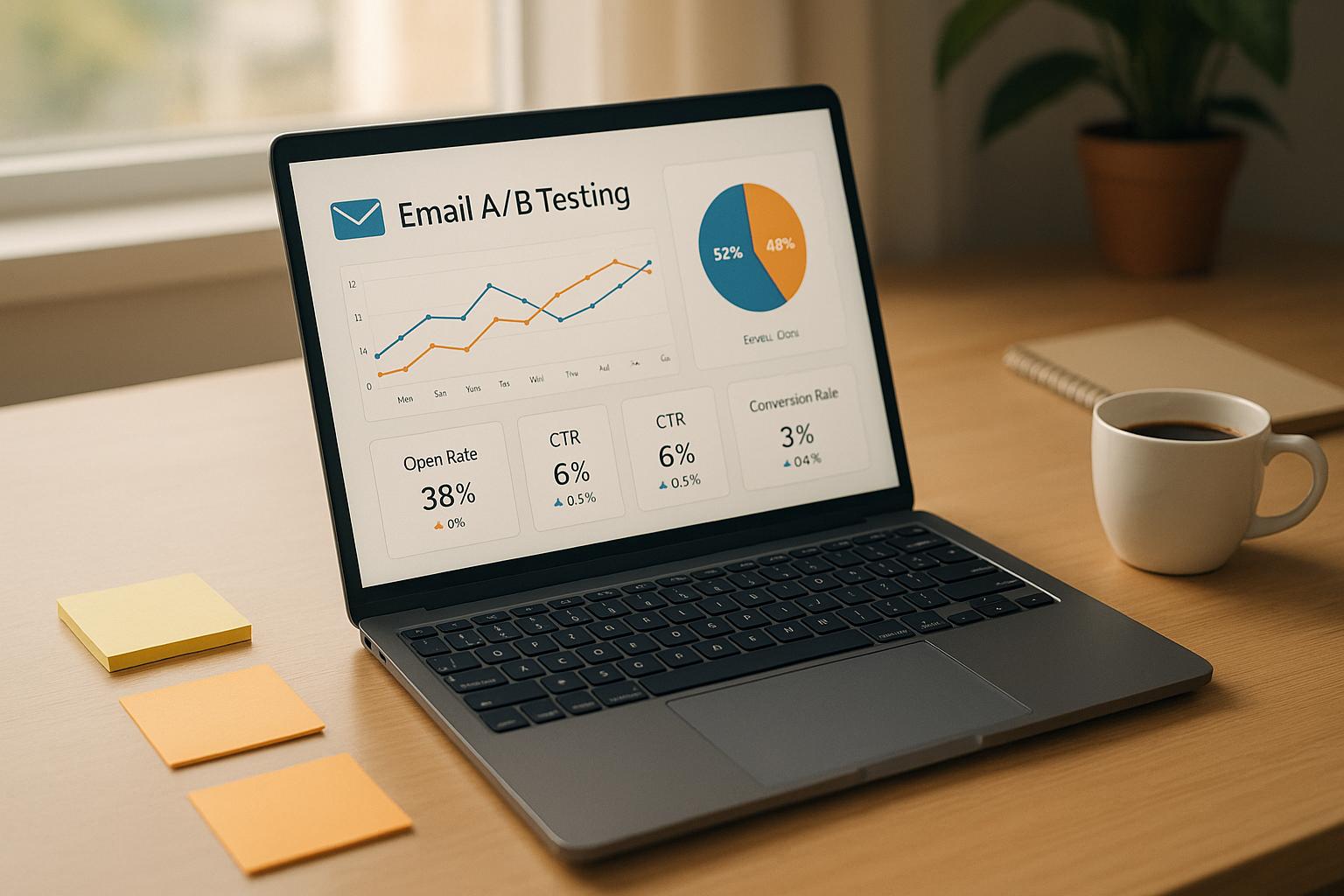Switching to a new email platform can be costly and complex. Here’s a quick breakdown of the main expenses to expect:
- Setup and Configuration: $500–$2,500 (higher for enterprise needs).
- Data Transfer: $0.10–$0.30 per 1,000 contacts, plus $200–$500 for older campaign data.
- Training: $1,000/day for workshops or $50/user for certifications.
- Integration: Standard tools are free, but custom APIs cost $200–$500 each.
- Hidden Costs: GDPR/CCPA compliance checks ($300–$800), downtime, and additional labor.
Pro Tip: Pre-clean your data to save 2–5 cents per record, and schedule migrations during off-peak periods (like Q1) for discounts.
Quick Comparison
| Cost Component | Small Business ($) | Mid-Tier ($) | Enterprise ($) |
|---|---|---|---|
| Setup | 0–500 | 500–2,500 | 2,500–15,000 |
| Data Transfer | Per contact rates | Larger data volumes | Complex data handling |
| Training | Basic sessions | Extended sessions | Comprehensive programs |
| Integration | Standard tools | Custom integrations | Advanced integrations |
| Compliance | Basic checks | Enhanced measures | Full-scale compliance |
For a detailed estimate, use the Email Service Business Directory’s migration tool. Planning ahead can help you avoid unexpected costs and ensure a smoother transition.
Time To Change Email Marketing Platform. Migrate To ...
1. Email Service Business Directory Costs

The Email Service Business Directory provides details on migration costs, which can vary depending on the size and complexity of the organization. Here’s a breakdown of the expenses:
Setup and Configuration
Setup fees typically range from $500 to $2,500, which is 15–20% below the industry average. This includes:
- Account configuration
- Initial API integration
- Basic automation setup
- Security protocols
For enterprise migrations requiring advanced security measures, setup costs can exceed $5,000. These initial expenses often influence the total investment required for migration.
Data Transfer Expenses
Data migration costs depend on the amount of data being transferred:
| Data Component | Cost Range | Notes |
|---|---|---|
| Contact Records | $0.10–$0.30 per 1,000 | Includes validation |
| Historical Data | $200–$500 | For campaigns older than 3 years |
| Technical Support | $150 per hour | Includes CSV mapping assistance |
Analyst Jane Doe suggests pre-cleaning your data to save $0.02–$0.05 per record. Additionally, scheduling migrations during off-peak times (like Q1) could lead to discounts of up to 20%.
Training and Onboarding
A free 30-minute orientation is available, but most businesses (78%) opt for paid training. Options include:
- Group workshops: $1,000 per day (up to 10 participants)
- Individual certification: $50 per user
- Enterprise onboarding: Starting at $2,500
Integration Costs
Standard connectors for platforms like Salesforce and Shopify are provided at no additional charge. However, custom integrations come with extra fees:
- Custom API development: $200–$500 per integration
- Complex workflow setup: $1,500–$3,000
- DNS configuration support: $200 flat fee
For larger migrations, volume discounts may help reduce these custom integration costs.
Volume Discounts
Organizations migrating over 500,000 contacts can take advantage of bulk pricing:
| Benefit | Savings |
|---|---|
| Setup Fee Discount | 10–15% off |
| Data Validation | Included (valued at $0.05 per record) |
| Priority Support | Complimentary |
For example, a retail chain saved $4,200 on a migration involving 1.2 million contacts by negotiating bulk pricing.
Additional Considerations
Additional costs to keep in mind include compliance and optimization services:
- GDPR/CCPA readiness checks: $300–$800
- Email template updates: $75–$150 per hour
- Domain authentication: $200
The platform offers an online calculator at https://emailservicebusiness.com/migration-tool. For instance, migrating 100,000 contacts with 5 user licenses could cost between $1,700 and $3,200.
Next, we’ll compare these costs with standard migration expenses.
2. Standard Platform Migration Expenses
Here’s a closer look at typical costs associated with platform migrations, based on insights from the Directory.
For mid-sized businesses, the total cost of a platform transition generally falls between $4,000 and $10,000.
Platform Tier Costs
Migration costs vary depending on the complexity of the platform:
| Platform Level | Setup Range | Included Services |
|---|---|---|
| Basic | $0–$500 | Data import, basic templates |
| Mid-tier | $500–$2,500 | Automation setup, training |
| Enterprise | $2,500–$15,000 | Custom integration, dedicated support |
Omnisend’s Q1 2025 flat-rate migration package, priced at $1,499, includes services like data auditing and automation rebuilding. This package highlights a shift toward clear, upfront pricing.
Data Migration Complexity
The size and complexity of data transfers can significantly impact costs. For instance, a retail chain in the Midwest spent $8,200 to migrate 750,000 contacts, including segment tagging - showing how intricate data migrations can drive expenses.
"41% of enterprises underbudget for these 'secondary' tech costs by 15–20%", according to Litmus.
Hidden Technical Expenses
Some technical costs are easy to overlook but can add up quickly:
- API Development: $2,000–$7,500 for creating custom connectors
- Workflow Reconfiguration: $1,500–$5,000 for transferring automation setups
- Compliance Updates: $800–$3,000 for ensuring GDPR/CCPA compliance
Regional Cost Variations
Rates for migration services can differ significantly across the United States:
- West Coast: $110–$180 per hour
- Midwest: $85–$140 per hour
- NYC/SF Agencies: Add a 12–18% premium for in-person training
These differences highlight how location can influence overall migration expenses.
Real-World Cost Example
Here’s a breakdown of the costs for an enterprise-level migration by a SaaS company:
| Component | Actual Cost | Details |
|---|---|---|
| Setup | $2,400 | Enterprise onboarding |
| Data Migration | $6,800 | 220,000 contacts with custom field mapping |
| Team Training | $4,500 | 30 hours of in-depth training |
| Integration | $11,200 | Shopify/Microsoft Dynamics connection |
Productivity Impact
Migration projects often reduce productivity, with industry research showing that 68% of companies lose at least 12 hours during the process. This downtime translates to:
- Small businesses: $150–$300 per hour
- Enterprise organizations: $1,000–$5,000 per hour
Risk Management
Risk management adds another layer of cost to migrations. Mission Cloud’s 2024 analysis found that enterprise-level data transfers cost $7.25 per GB, and 43% of clients required custom API integrations costing between $12,000 and $45,000. Experts suggest setting aside a 20% contingency fund to handle unexpected issues, such as data formatting challenges, which affect 22% of migration projects.
sbb-itb-6e7333f
Cost Comparison Analysis
The cost of switching email platforms depends on several factors, including the complexity of the project and specific business needs. Elements such as the number of contacts, integration requirements, and customization all play a role in determining the overall expense. Many organizations overlook indirect costs, which can lead to underestimating the total budget. Below, we break down these cost components to help you compare expenses across different migration scenarios.
Total Cost Structure Analysis
Email platform migration costs typically include several key components:
| Cost Component | Basic Migration | Mid-tier Migration | Enterprise Migration |
|---|---|---|---|
| Initial Setup | Minimal fees for basic configuration | Moderate fees for additional customization | Higher fees for extensive configurations |
| Data Transfer | Standard per-contact rates for small lists | Increased rates for larger data volumes | Premium pricing for handling complex data sets |
| Integration Work | Limited use of standard tools | Additional work for custom integrations | Extensive custom API development and advanced integrations |
| Team Training | Basic user training sessions | Extended sessions covering new features | Comprehensive training programs with ongoing support |
| Compliance Setup | Standard regulatory measures | Enhanced compliance for stricter regulations | Full-scale compliance integration tailored for enterprise needs |
This table provides a starting point for understanding how costs vary depending on the size and requirements of a business.
Industry-Specific Cost Variations
Certain industries face unique challenges when migrating email platforms. For example, e-commerce companies often deal with complex migrations due to the need to transfer product catalogs and detailed customer data. These businesses typically require advanced data segmentation and tracking, which can increase overall costs compared to industries with simpler data requirements.
Migration Package Analysis
Here’s a look at the common migration packages and what they include:
-
Small Business Solutions
Designed for companies with smaller contact lists and minimal integration needs. This package typically covers essential data transfers and basic setup configurations. -
Mid-Market Implementations
Ideal for growing businesses, this package includes services like custom field mapping, advanced segmentation, and CRM integration support. -
Enterprise Migrations
Tailored for large organizations, this package offers extensive customization, including custom API development, multiple system integrations, extended support, and in-depth staff training.
Regional Cost Factors
Costs can also vary by region. For instance, custom integrations and labor expenses may differ significantly between locations, impacting the overall migration budget.
ROI Considerations
While migration costs can seem high upfront, they are often offset by long-term benefits. Improved automation, better targeting capabilities, and streamlined workflows can lead to noticeable savings in operational costs over time.
Impact of Hidden Costs
Don’t overlook hidden expenses like data cleanup, additional labor during busy periods, temporary system downtime, security compliance upgrades, and integration testing. Including these in your budget helps avoid unexpected financial surprises during the migration process. A detailed, well-planned budget ensures smoother execution and fewer disruptions.
Conclusion
Managing the costs of migrating to a new email platform requires thoughtful planning and a clear budget. From our analysis, businesses should expect to cover both direct costs - like setup fees and data transfers - and indirect costs, such as training staff and potential downtime.
To get an accurate estimate:
- Identify Key Requirements: Determine the size of your contact list, email volume, integration needs, compliance requirements, and training demands.
- Calculate Total Costs: Include setup and migration fees, ongoing maintenance, support costs, training expenses, and any productivity impacts.
Using tools to simplify this process can save time and effort. For example, the Email Service Business Directory provides resources to help evaluate migration costs for various platforms. Their Advanced plan, priced at $999, offers detailed analytics and CRM integration, making it a solid choice for businesses with up to 10,000 contacts.
Proper implementation can lead to long-term savings. Businesses that carefully assess their needs and use available tools often enjoy smoother transitions and a better return on their email marketing investment.
It's also wise to consult migration experts to ensure your budget is comprehensive and realistic. With careful planning and professional guidance, your transition can be both seamless and cost-effective.
FAQs
How can businesses reduce hidden costs when migrating to a new email marketing platform?
To minimize hidden costs during an email platform migration, businesses can take several proactive steps. Start by thoroughly researching potential platforms to ensure they meet your needs and budget. Look for transparent pricing that includes setup fees, data transfer, and any required training.
Plan ahead to avoid surprises. Create a detailed migration plan, including timelines, resource allocation, and potential risks. This can help prevent unexpected delays or additional costs. Additionally, ensure your team is properly trained to use the new platform efficiently, as this can reduce errors and improve productivity.
Finally, consider consulting resources like the Email Service Business Directory, which provides curated information on top platforms and service providers. This can save time and help you make informed decisions that align with your business goals.
When is the best time for a company to schedule an email platform migration to save on costs?
The best time to schedule an email platform migration often depends on your provider's pricing cycles and promotional periods. Many email marketing platforms offer discounts during the end of the fiscal year, major sales events like Black Friday, or at the start of a new quarter. Timing your migration around these periods can help reduce setup fees or secure better pricing.
Additionally, consider scheduling your migration during a slower business period to minimize disruptions and allow your team to focus on the transition. Planning ahead and consulting your provider about potential discounts can also uncover cost-saving opportunities.
What should I consider when calculating the total cost of switching to a new email platform?
When estimating the cost of migrating to a new email platform, it's important to account for several key factors. Setup fees are often the first expense, covering the initial configuration of your account and platform. Data transfer costs may apply if you need to migrate large volumes of data, such as subscriber lists or campaign history. Additionally, training expenses for your team to learn the new platform can vary depending on its complexity and the level of support provided.
To make an informed decision, consider both upfront costs and any ongoing fees associated with the new platform. Evaluating these factors will help you avoid unexpected expenses and ensure a smooth transition to your new email marketing solution.


